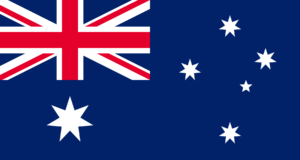On October 23, alongside my colleagues Konstantia Koutouki of University of Montreal, as well as Safie Diallo and Alexandra Lorange, I partook in a discussion initiated by the McGill Runnymede Society, on the criticism of cultural appropriation in the arts and literature.
In preparation for this discussion, I discovered more problems with the notion of cultural appropriation than time would allow me. So, I’ve decided to publish a series of posts on the topic.
An unruly polysemy rather than a concept
“Cultural Appropriation” as defined by Oxford Reference is “a term used to describe the taking over of creative or artistic forms, themes, or practices by one cultural group from another.” It is in general used to describe Western appropriations of non‐Western or non‐white forms, and carries connotations of exploitation and dominance. The concept has come into literary and visual art criticism by analogy with the acquisition of artifacts (the Elgin marbles, Benin bronzes, Lakota war shirts, etc.) by Western museums.” Yet, an analogy is generally best taken with a grain of salt. To start with, let’s situate the case of appropriated artifacts among the following six:
- The illicit import, export and transport of cultural property as prohibited by the 1970 UNESCO Convention;
- The copyright infringement on artistic and literary works –with all that implies in terms of materialization, substance, and creativity– produced by an Indigenous or a member of a “minority”, be it based on sexual orientation, gender, or race, etc.;
- What the World Intellectual Property Organization (WIPO) considers as trademark and patent laws excesses, that is, allowing natural or legal persons to acquire and exploit IP rights (1) on the use of pre-existing, rather than made-up, words or symbols –by means of so-called “suggestive” or “descriptive” marks rather than “arbitrary”– already used for equivalent or similar purposes in living indigenous languages or cultures, or (2) on an “invention” that, in reality, only is the individual taking over of the shared knowledge of an Indigenous community, including obtaining a patent on a genetic resource that is part of a traditional Indigenous pharmacopoeia (see WIPO’s background briefs for additional information);
- The creation of a work of art, a musical, literary piece, theatrical, visual, cinematographic, etc., by one or a number of creators, members of the “dominant culture”, inspired by or “representing” one or many “dominated cultures,” without authorization from “representatives” or “consultation” with “members” of the borrowed culture(s);
- Casting a non-minority or non-Indigenous actor to play a minority-member or an Indigenous character.
- More generally, producing, directing or creating a play, film, musical or any artistic performance whose casting or distribution are not “sufficiently” racially or culturally “representative.”
If an analogy with the first use of the term “cultural appropriation” can contribute in giving meaning to the second and third, it is misleading to couple the first with any of the last three or a combination thereof, since nothing in these latter cases is “appropriated.” Cultural appropriation as a blanket criticism –which, of course, will always feel free to dismiss the law, along with “Western” science or reason, as an instrument of “colonial domination”– often decries the injustice of “appropriation” despite the absence of an art work that attracts copyright protection, while simultaneously seeking to expropriate the copyrighted work of the individual artist, or at the very least impose a sort of “tax” upon the artist for using the allegedly appropriated work. In the last three instances, there can be no question of “appropriation” except metaphorically, in an aesthetic sense. I have to insist that specifying this does not amount to supporting the argument that art is absolutely isolated from its “social context.”
When censorship is concealed as “critique”
In the sense that concerns us here, the term “censorship” is not a legal one. It goes without saying that any criticism of censorship is not to be taken here as a legal opinion of illegality or unconstitutionality on my part. That said, I would like to highlight that even though case law does not seem to live up to the text, the Quebec Charter of Human Rights and Freedoms, whose protection extends to freedom of expression, applies not only to public law relations, but also to private law ones in areas within the province’s jurisdiction. I would also point out that in addition to the general law of contracts, certain private foreign laws, such as France’s consumer law, have proved apt in providing some protection against private censorship, including that attributed to Facebook. In terms of freedom of artistic creation and dissemination, French public law has, since 2016, severely prohibited some form of private censorship. Indeed, paragraph two of Article 431-1 of France’s Code pénal stipulates that “the act of hindering, in a concerted manner and by use of threat, the exercise of the freedom of artistic creation or the freedom of dissemination of artistic creation is punishable by imprisonment for a term of one year and a fine of 15,000 euros”.
It is characteristic of the new, trendy modes of censorship not to identify themselves as such. The proponents of this censorship say something like “It never was a question of censorship! Rejecting funding applications isn’t censorship! Censorship comes from the state! You just don’t get it, it’s the opposite of censorship, since it’s a matter of civil society’s exercising its freedom of expression! It’s nothing more than a call for artistic and literary responsibility! Censorship has nothing to do with it, what we’re talking about is a struggle for the transformation of social relations! Be woke!” On this account, everything is explained for all people.
There is also a clear distinction to be drawn between a genuine critique of an artistic work that has been created, disseminated, and then seen or read, and calling for a preemptive, a priori rejection of categories of art works on the basis that they amount to a sort of moral transgression, such as “cultural appropriation,” or “unrepresentative” casting.
A more specific example concerns artistic or literary treatment of rape without explicit moral condemnation, represented in Vanessa Courville’s resignation letter as director of the Revue XYZ, which she had released publicly before withdrawing it. The letter asserted that a literary text that depicts a rape scene without explicit moral condemnation amounts to a justification of, or contribution to, “rape culture,” which “is not covered by freedom of expression,” a principle that, “without responsible writing, is insignificant.” So, literary texts representing rape without explicit moral condemnation should “no longer be received by committees as original works.” According to its author, this call to publishers, of course, “never was a question of censorship”.
The distinction between art or literary criticism and private censorship in no way precludes the former from invoking or relying upon various moral or political considerations. See for example the article by Karen Fricker and Rémy Charest on Zulu Time by Robert Lepage. (I think it is a terrible article, but this is a different question.) This choice belongs to the “critic,” as a “specialist,” and to the public as well.
Maxime St-Hilaire is an Associate Professor at University of Sherbrooke’s Law Faculty and presently visiting scholar at University of Oslo’s Norwegian Center for Human Rights
 Advocates for the Rule of Law
Advocates for the Rule of Law



